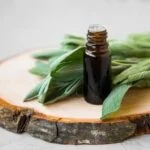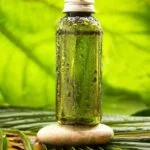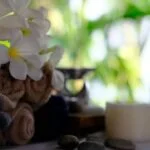Aromatherapy is a therapeutic practice that has been used for centuries to promote relaxation, reduce stress, and improve overall well-being. Many people believe that a diffuser is necessary for aromatherapy, but there are numerous ways to enjoy the benefits of essential oils without one. In this article, we will explore how to use aromatherapy without a diffuser and uncover the various methods for incorporating essential oils into your daily routine.
Aromatherapy involves using natural plant extracts, typically in the form of essential oils, to enhance mental and physical health. The practice works by stimulating the smell receptors in the nose, which then send messages through the nervous system to the limbic system – the part of the brain that controls emotions.
This process can help to calm and relax the mind, as well as relieve stress and anxiety. While diffusers are commonly used to disperse essential oils into the air, there are other effective ways to experience aromatherapy without one.
Using essential oils directly is one such method. Whether through topical application or inhalation, high-quality pure essential oils can provide powerful aromatherapy benefits without the need for a diffuser.
In addition to these methods, creating aroma sprays, incorporating essential oils into bath and shower routines, and using aromatherapy jewelry and accessories are all practical ways to embrace aromatherapy without a traditional diffuser. By exploring these different techniques, you can find what works best for you and enjoy the versatility and accessibility of aromatherapy in your daily life.
Using Essential Oils for Aromatherapy
Aromatherapy is a holistic healing treatment that uses natural plant extracts, or essential oils, to promote overall well-being. While diffusers are commonly used to disperse these oils into the air, there are alternative methods for using aromatherapy without a diffuser. Understanding how to use aromatherapy without a diffuser allows individuals to experience the benefits of essential oils for relaxation and stress relief in various ways.
One effective way to use essential oils for aromatherapy without a diffuser is through topical application. Essential oils can be applied directly to the skin, where they are absorbed into the bloodstream and provide therapeutic effects.
It’s important to dilute essential oils with a carrier oil, such as coconut oil or almond oil, before applying them to the skin to prevent irritation. Specific essential oils that are safe and effective for topical use include lavender, peppermint, and tea tree oil.
Inhalation techniques also offer a convenient method for using aromatherapy without a diffuser. Direct inhalation of essential oils can be achieved by placing a few drops of oil on a handkerchief, cotton ball, or tissue and inhaling deeply. This method allows for quick and effective aromatherapy benefits by stimulating the olfactory system and promoting mental clarity and emotional balance. However, precautions should be taken when inhaling essential oils, as some may cause respiratory irritation if not used properly.
| Topic | Description |
|---|---|
| Topical Application | Essential oils diluted with a carrier oil and applied directly to the skin |
| Inhalation Techniques | Direct inhalation of essential oils using handkerchief, cotton ball, or tissue |
Topical Application of Essential Oils
Aromatherapy has been utilized for centuries to promote relaxation, relieve stress, and improve overall well-being. While diffusers are commonly used to disperse essential oils into the air, they are not the only way to enjoy the benefits of aromatherapy. In fact, there are several alternative methods for using essential oils without a diffuser. This section will focus on the topical application of essential oils and provide detailed guidance on how to use aromatherapy without a diffuser.
When it comes to using essential oils for aromatherapy without a diffuser, topical application is one of the most popular methods. To apply essential oils topically, it’s important to dilute them with a carrier oil to ensure safe and effective usage.
Carrier oils such as coconut oil, almond oil, or jojoba oil are commonly used to dilute essential oils before applying them to the skin. This not only helps in moisturizing but also assist in slowing down absorption for improved benefits.
It is important to note that some essential oils can be irritating or sensitizing when applied directly to the skin, so it’s crucial to perform a patch test before widespread use. Always choose high-quality, pure essential oils for topical application without a diffuser for best results.
| Topical Application Tips | Benefits |
|---|---|
| Dilute with a carrier oil | Moisturizes and absorbs safely |
| Perform patch test | Avoid irritation and sensitization |
| Choose high-quality essential oils | Ensures efficacy of aromatherapy |
Inhalation Techniques for Aromatherapy
When it comes to aromatherapy, inhalation is one of the most popular and effective ways to harness the benefits of essential oils without the need for a diffuser. Whether you’re looking to promote relaxation, ease stress, or simply enjoy pleasant scents, there are several simple and accessible inhalation techniques that can be easily incorporated into your daily routine.
Here are some effective ways to use aromatherapy without a diffuser:
- Using a handkerchief: Apply a few drops of your chosen essential oil onto a clean handkerchief and inhale deeply. This method allows you to carry the scent with you throughout the day for continuous aromatherapy benefits.
- Using a cotton ball: Another easy way to inhale essential oils is by applying a couple of drops onto a cotton ball and placing it in your immediate surroundings. This method is especially useful in small spaces like an office cubicle or car interior.
- Using a tissue: Place a few drops of essential oil onto a tissue and inhale directly from it whenever you need a quick pick-me-up. This method allows for portable aromatherapy without the need for any specialized equipment.
Direct inhalation of essential oils through these simple methods can provide quick relief from stress, anxiety, or fatigue, making them ideal solutions for those seeking alternative means of aromatherapy without using traditional diffusers. Additionally, these techniques can also be easily customized by choosing different essential oils based on individual preferences and desired therapeutic effects. Remember to exercise caution when using highly potent essential oils such as peppermint or eucalyptus, as they may cause irritation if used undiluted.
Creating Aroma Sprays and Room Sprays
Aroma sprays and room sprays are a fantastic way to enjoy the benefits of aromatherapy without the need for a diffuser. These homemade sprays can promote relaxation, purify the air, and create a pleasant ambiance in any room. By using high-quality essential oils and a few simple ingredients, you can easily create your own customized sprays for aromatherapy.
Step-by-Step Guide on Making Aroma Sprays
To make an aroma spray, you’ll need a few key ingredients: distilled water, witch hazel or vodka, and your choice of essential oils. Start by filling a small spray bottle with the distilled water, leaving some space at the top. Then add a splash of witch hazel or vodka to help emulsify the essential oils and extend the shelf-life of the spray.
Finally, add several drops of your chosen essential oil or blend of oils to the bottle. Shake well before each use to ensure that the oils are evenly dispersed in the liquid.
Recipes for Aroma Sprays and Room Sprays
There are countless ways to customize your aroma sprays and room sprays based on your preferences and desired effects. For relaxation, consider using lavender, chamomile, and ylang-ylang essential oils. To refresh the air and promote energy, try citrus oils such as lemon, sweet orange, or grapefruit. You can also get creative with blends like cedarwood and bergamot for a grounding effect or peppermint and eucalyptus for clear breathing.
Tips for Using Aroma Sprays Without a Diffuser
Once you’ve created your aroma spray, using it is simple yet effective. Simply shake the bottle well before each use and then mist it into the air throughout your space. You can also lightly mist onto linens or upholstery for added fragrance.
Additionally, carrying a small travel-size aroma spray in your bag allows you to enjoy aromatherapy on-the-go without needing a diffuser. With just a few spritzes of your custom blend, you can instantly uplift your mood or create a sense of calm wherever you are.
By creating your own aroma sprays and room sprays infused with essential oils, you can easily embrace aromatherapy without depending on a traditional diffuser. Whether you’re looking to unwind after a long day or simply want to freshen up your surroundings with natural scents, these homemade sprays offer an accessible and versatile way to enjoy the benefits of aromatherapy anytime, anywhere.
Aromatherapy Bath and Shower
Aromatherapy has long been known for its relaxation and stress-relief benefits, and one of the most enjoyable ways to incorporate it into your routine is through bath and shower time. Using essential oils in the bath or shower can elevate the experience, transforming it into a luxurious and soothing sensory treat. For those who do not have a diffuser, there are various ways to use aromatherapy effectively during bath and shower time.
To use aromatherapy without a diffuser in the bath, simply add a few drops of your chosen essential oil to a carrier oil or unscented bath gel before adding it to the water. This method allows the oils to disperse throughout the water and create a fragrant and therapeutic atmosphere. Some popular essential oils for bath time aromatherapy include lavender for relaxation, eucalyptus for respiratory support, and frankincense for grounding and calming effects.
In the shower, you can still enjoy aromatherapy by creating a DIY shower steam blend. Place a few drops of essential oil onto a washcloth or sponge and hang it near where hot water will hit during your shower. The steam from the hot water will cause the essential oils to release their aroma, creating an invigorating or relaxing experience depending on your chosen oils.
Just be sure to position the cloth in an area where it won’t get drenched immediately, as this could dilute the oils too quickly. Remember that when using any method of aromatherapy in the bathroom, always exercise caution with slippery surfaces, especially if using carrier oils in the tub or shower if they can make surfaces more slippery. This way you can still enjoy all of these benefits without needing special equipment such as a diffuser.
Using Aromatherapy Jewelry and Accessories
Aromatherapy has been gaining popularity as a natural and effective way to promote relaxation, reduce stress, and improve overall well-being. While many people believe that a diffuser is necessary for aromatherapy, there are actually several alternative methods for enjoying the benefits of essential oils without the need for a traditional diffuser. In this section, we will explore how to use aromatherapy jewelry and accessories as convenient and portable options for on-the-go aromatherapy.
Exploring Aromatherapy Jewelry
One popular method of using essential oils without a diffuser is through aromatherapy jewelry, such as diffuser necklaces and bracelets. These accessories are designed to hold essential oils so that wearers can enjoy the therapeutic benefits of the oils throughout the day.
Aromatherapy necklaces often feature pendants with small pads or diffusing stones where essential oils can be applied, while aromatherapy bracelets may have porous beads or stones that absorb and slowly release the oils. When choosing aromatherapy jewelry, it’s important to select high-quality pieces made from non-reactive materials that won’t degrade when in contact with essential oils.
Tips for Using Aromatherapy Accessories
In addition to jewelry, there are other accessories specifically designed for aromatherapy on the go. For example, inhalers with replaceable wicks allow users to customize their own essential oil blends for quick inhalation throughout the day. Portable personal inhalers are also available, which can easily fit in a pocket or purse for convenient access whenever needed. When using these accessories, it’s crucial to use only high-quality, pure essential oils to ensure safety and effectiveness.
DIY Aromatherapy Jewelry and Accessories
For those who prefer a hands-on approach, making your own aromatherapy jewelry and accessories at home can be a fun and rewarding experience. DIY diffuser necklaces can be created using materials like lava beads or felt pads inserted into decorative lockets, allowing individuals to personalize their own designs while incorporating their favorite essential oils.
Furthermore, crafting your own personal inhalers enables you to tailor specific blends according to your needs and preferences. By creating homemade aromatherapy accessories, individuals have full control over the quality of materials used and the specific essential oil blends they wish to enjoy throughout the day.
By utilizing these convenient alternatives, individuals can easily incorporate aromatherapy into their daily routines without the need for a traditional diffuser. Whether through stylish jewelry or personalized accessories made at home, embracing aromatherapy without a diffuser allows individuals to experience the soothing benefits of essential oils anytime and anywhere they desire.
Final Thoughts
Aromatherapy is a versatile and accessible practice that offers numerous benefits for relaxation, stress relief, and overall well-being. Despite the common misconception that a diffuser is necessary for aromatherapy, there are various ways to enjoy the benefits of essential oils without one. By utilizing different methods and techniques, individuals can easily incorporate aromatherapy into their daily routines without the need for a traditional diffuser.
From using essential oils for topical application and inhalation to creating aroma sprays, incorporating them into bath and shower routines, and even utilizing aromatherapy jewelry and accessories, there are countless ways to embrace aromatherapy without a diffuser. For those who may wonder how to use aromatherapy without a diffuser, this article has provided detailed instructions and tips on making the most of essential oils for both personal care and home environment enhancement.
As readers explore and experiment with the various methods outlined in this article, they will discover the versatility of aromatherapy without the need for a diffuser. It’s important to remember that high-quality, pure essential oils play a crucial role in effective aromatherapy practices.
By choosing reputable sources for essential oils and following safety guidelines, individuals can fully experience the therapeutic benefits of aromatherapy in their everyday lives. Whether it’s creating customized blends or incorporating essential oils into different aspects of daily life, embracing aromatherapy without a diffuser opens up a world of possibilities for holistic wellness.
Frequently Asked Questions
How to Do Aromatherapy Without a Diffuser?
Aromatherapy can be done without a diffuser by simply inhaling essential oils directly from the bottle or by adding a few drops to a cotton ball and placing it nearby. Another option is to mix essential oils with water in a spray bottle and use it as a room spray.
Do I Need a Diffuser for Aromatherapy?
A diffuser is not necessarily needed for aromatherapy, as there are other methods to enjoy the benefits of essential oils. While diffusers are popular and convenient, they are not the only way to disperse essential oils into the air. Alternatives like using them topically or inhaled directly can still be effective.
What Can I Use Instead of Diffuser Oil?
Instead of diffuser oil, you can use carrier oils like coconut or jojoba oil to dilute your essential oils for topical use. For aromatic purposes, you can also use oil burners, reed diffusers, or add a few drops of essential oil to potpourri or homemade candles for fragrance.

Are you looking for a natural way to improve your health and wellbeing?
If so, aromatherapy may be the answer for you.





